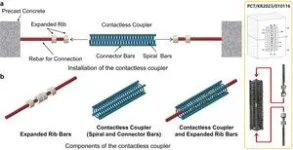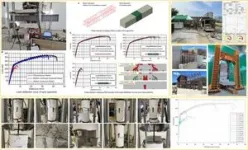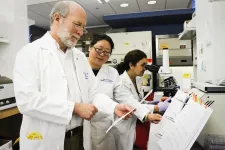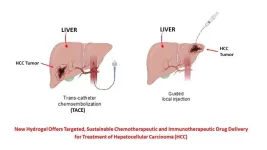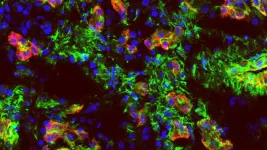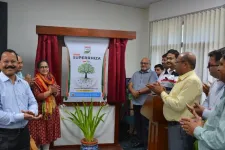Long-live quantum entanglement goes to distance
2023-11-29
(Press-News.org)
Quantum technologies are currently maturing at a breath-taking pace. These technologies exploit principles of quantum mechanics in suitably engineered systems, with bright prospects such as boosting computational efficiencies or communication security well beyond what is possible with devices based on today’s 'classical' technologies. As with classical devices, however, to realise their full potential, quantum devices will need to be networked. In principle, this can be done using the fibre-optic networks employed for classical telecommunications. But practical implementation requires that the information encoded in quantum systems can be reliably stored at the frequencies used in telecom networks — a capability that has not yet been fully demonstrated. Writing in Nature Communications, the group of Prof. Xiao-Song Ma at Nanjing University reports record-long quantum storage at telecom wavelengths on a platform that can be deployed in extended networks, paving the way for practical large-scale quantum networks.
Keeping the light on
The physical fabric of the Internet is woven from optical fibres. The glass fibres that make up these vast networks are famously pure. A common example is that you could see clearly through a kilometre-thick window made of such glass. Nonetheless, some losses are unavoidable, and the optical signals that travel through telecommunications networks need to be 'refreshed' at regular intervals once distances exceed a few hundreds of kilometres. For classical signals, there exist well-established and routinely used techniques based on repeated signal amplification. For quantum states of light, however, these routinely used approaches are unfortunately not suitable.
Why is 'quantum light' different? A key ingredient that makes quantum technologies so powerful is quantum entanglement, a state in which two or more quanta of light (or, photons) share between them stronger correlations than is possible for classical light. In conventional optical signal regeneration, the optical signal is converted into an electrical signal, which is amplified before being converted back into light pulses. However, in such a process entangled photons would lose their all-important quantum correlations. The same problem occurs with other conventional methods.
A solution is to use so-called quantum repeaters. In a nutshell, quantum repeaters store the fragile entangled state and transform it into another quantum state that shares entanglement with the next node down the line. In other words, instead of amplifying the signal, the nodes are 'stitched together', exploiting their unique quantum properties. At the heart of such quantum-repeater networks are quantum memories in which quantum states of light can be stored. Realising these memories with a sufficiently long storage time is an outstanding challenge, especially for photons at telecom wavelengths (that is, around 1.5 µm).
A crystal-clear case
Hence the excitement as Ming-Hao Jiang, Wenyi Xue and colleagues in the group of Xiao-Song Ma now report storage and retrieval of the entangled state of two telecom photons with a storage time of close to two microseconds. This is almost 400 times longer than what had been demonstrated before in this field and therefore is a decisive step towards practical devices.
The memories developed by Jiang, Xue et al. are based on an yttrium orthosilicate (Y2SiO5) crystals doped with ions of the rare-earth element erbium. These ions have optical properties that are almost perfect for use in existing fibre networks, matching the wavelength of around 1.5 μm. The suitability of erbium ions for quantum storage has been known for some years, and the fact that they are imbedded in a crystal makes them particularly attractive with a view to large-scale applications. However, practical implementations of erbium-ion-based quantum memories proved relatively inefficient so far, hindering further progress towards quantum repeaters.
Ma's group has now made significant advances in perfecting the techniques and has shown that even after storing the photon for 1936 nanoseconds, the entanglement of the photon pair is preserved. This means that the quantum state can be manipulated during this time, as is required in a quantum repeater. In addition, the researchers combined their quantum memory with a novel source of entangled photons on an integrated chip. This demonstrated ability to both generate high-quality entangled photons at telecom frequencies and store the entangled state, all on a solid-state platform suitable for low-cost mass production, is exciting as it establishes a promising building block that might be combined with existing large-scale fibre networks — thereby enabling a future quantum internet.
Reference
M.-H. Jiang, W. Xue, Q. He, Y.-Y. An, X. Zheng, W.-J. Xu, Y.-B. Xie, Y. Lu, S. Zhu & X.-S. Ma. Quantum storage of entangled photons at telecom wavelengths in a crystal. Nature Communications 14, 6995 (2023).
END
ELSE PRESS RELEASES FROM THIS DATE:
2023-11-29
ST. LOUIS – Each year, tuberculosis (TB) kills more people than any other infectious disease, falling out of the top spot only temporarily during the COVID-19 pandemic.
Despite TB’s wide reach and some lost progress during the COVID-19 pandemic, researchers believe it is possible to eradicate TB through advances in vaccine development and public health. To cross the finish line, scientists must find ways to test new vaccines rapidly to prevent TB infections more effectively.
In a paper published in the Journal of Infectious Diseases, Daniel Hoft, M.D., Ph.D., ...
2023-11-29
Two papers recently published in Environmental Toxicology and Chemistry have made important advancements toward understanding the effects of perfluorooctane sulfonate (PFOS) on aquatic life, especially fish. Zebrafish had been identified in a previous study of limited scope as being among one of the most sensitive aquatic species to PFOS, and the results of that limited-scope study have influenced PFOS water quality criteria derived by some regulatory agencies, including the Australian Environmental Protection Agency (EPA).
Kurt Gust and ...
2023-11-29
(LOS ANGELES) – November 29, 2023 - Scientists from the Terasaki Institute for Biomedical Innovation (TIBI) have developed an injectable or catheter-administered hydrogel with enhanced capabilities for treating hepatocellular carcinoma (HCC), a deadly form of liver cancer. As described in their recent publication in Advanced Functional Materials, this drug-eluting hydrogel can provide sustained, pH-dependent drug co-delivery and has capabilities for promoting anti-tumor immune responses. This reduces tumor cell proliferation and growth and offers a more efficient means of enabling tumor cell death.
Worldwide, HCC is a leading cause of ...
2023-11-29
Optoelectronics detect or emit light and are used in a variety of devices in many different industries. These devices have historically relied on thin transistors, which are small semiconductors that control the movement of electrons and photons, made out of graphene and other two-dimensional materials. However, graphene and these other materials often have problems with band gap opening and other shortcomings that have researchers searching for an alternative.
When treated with a method called the ...
2023-11-29
Researchers from Duke University, University of New South Wales, University of Wisconsin, and University of Washington published an editorial for the Journal of Marketing that calls for marketing to tackle the challenges and opportunities in dynamic contemporary health care markets.
The editorial, introducing a special issue on “Marketing in the Health Care Sector” for the Journal of Marketing, is titled “Marketing in the Health Care Sector: Disrupted Exchanges and New Research Directions” and is authored by Christine Moorman, Harald J. van Heerde, C. Page Moreau, and Robert W. Palmatier. The special issue ...
2023-11-29
Recent findings at Cold Spring Harbor Laboratory (CSHL) shine a new light on pancreatic cancer.
More than 90% of pancreatic cancer cases are attributed to an aggressive, deadly form of the disease called pancreatic ductal adenocarcinoma, or PDAC. Researchers have a poor understanding of how our immune system interacts with PDAC. So, coming up with treatments is tricky. It’s thought patients do not show a natural immune response to the cancer because the tumor environment somehow prevents that response. Many are unconvinced that PDAC ...
2023-11-29
While life on Earth is relatively new, geologically speaking, the ingredients that combined to form it might be much older than once thought. According to research published in ACS Central Science, the simplest amino acid, carbamic acid, could have formed alongside stars or planets within interstellar ices. The findings could be used to train deep space instruments like the James Webb Space Telescope to search for prebiotic molecules in distant, star-forming regions of the universe.
It has long been hypothesized that one of the building blocks for life, amino acids, could have formed during reactions in the “primordial ...
2023-11-29
Mycorrhiza biofertilizer Uttam Superrhiza has been named as the winner of the Applied Microbiology International Product of the Year 2023.
The prestigious prize recognizes a commercial product derived from microbiology research, with special consideration given to those products that have addressed the United Nations Sustainable Development Goals.
Uttam Superrhiza, marketed by Chambal Fertilizers and Chemicals Limited in India, is manufactured by the not-for-profit institute, The Energy and Resources Institute (TERI).
Disruptive mycorrhiza
A disruptive ...
2023-11-29
The Korea Institute of Civil Engineering and Building Technology (KICT, President Kim, Byung-Suk) has developed a new Contactless Coupler that can efficiently improve the constructability of precast concrete (hereinafter referred to as PC).
Recently, Off-site Construction (OSC) has been actively used worldwide to solve the problems at complex construction sites. The OSC method minimizes on-site work by prefabricating parts of the structure and then simply assembling and constructing them on-site. In particular, Korean construction sites are promoting OSC to solve the problem of aging skilled workers and labor shortages.
The PC method, one of the representative OSC methods, is a method ...
2023-11-29
Blood tests are a common, yet often painful, step in health care. But what if we could skip the needles altogether? Saliva and blood contain many of the same biomarkers, and collecting spit is as simple as drooling into a container. Researchers reporting in ACS Sensors have developed a device that detects glucose and adenosine monophosphate (AMP) biomarkers in saliva with high sensitivity, which could help make at-home health monitoring easier and without a poke.
Blood tests provide critical information about a person’s health. But they also rely on uncomfortable procedures, ranging from collecting small blood samples through frequent finger pricks to blood draws from ...
LAST 30 PRESS RELEASES:
[Press-News.org] Long-live quantum entanglement goes to distance

